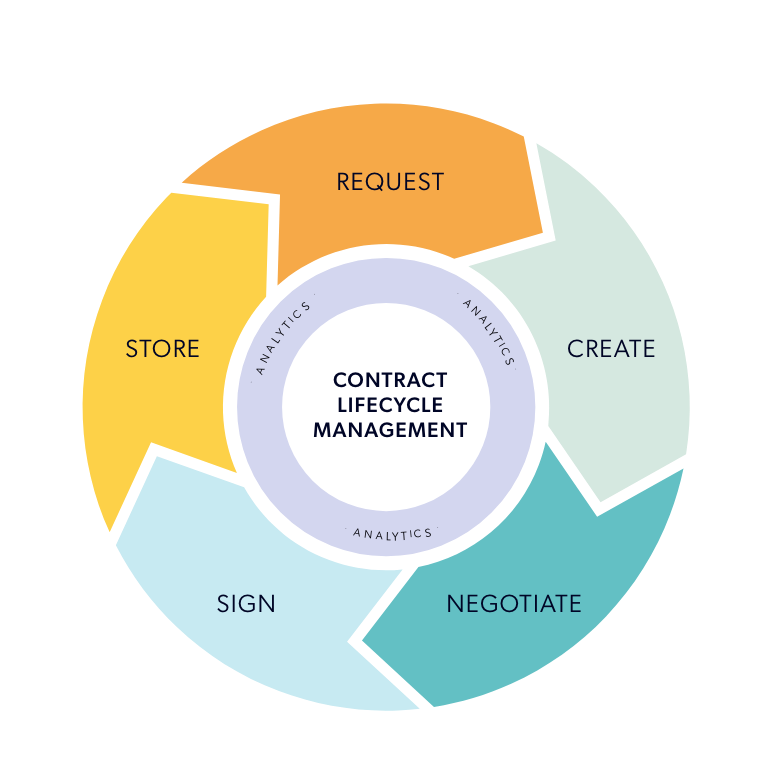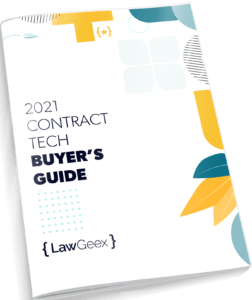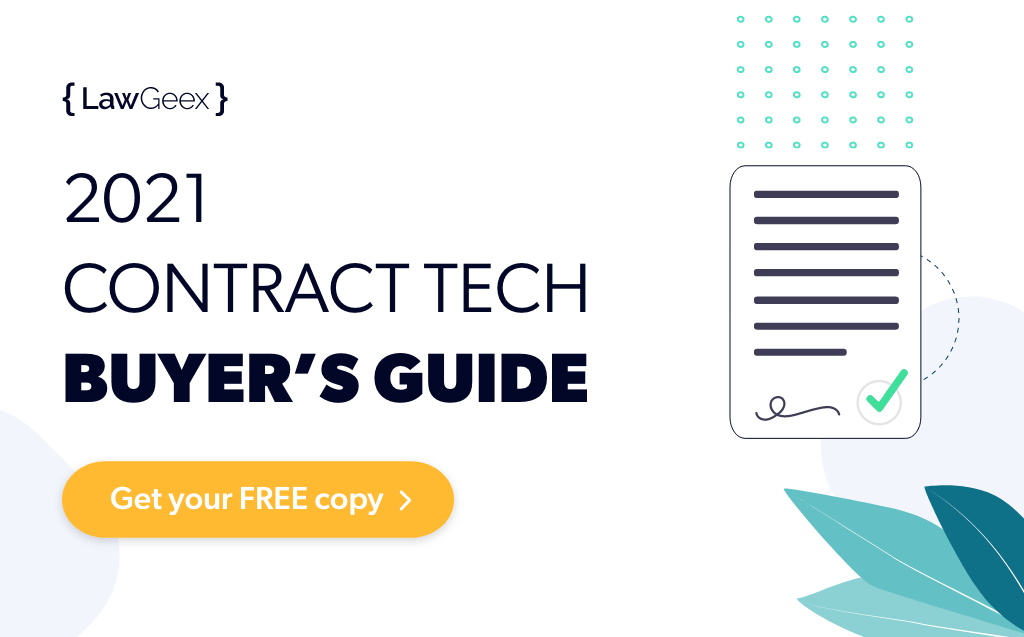Contract management is not a simple task. It should be. It can be. But for many companies it presents a formidable challenge.
Outdated, paper-based practices can have damaging legal and business consequences, exposing a company to high costs and liability for contractual and regulatory non-compliance.
Companies typically lose between 5% to 40% of value on a given deal due to inefficient contract processes. It literally pays to get contract management right. Unsurprisingly, contract solution platforms secured $70 million in investment in the second quarter of 2020, making contract tech the most popular among LegalTech investments.
So, what are the problems these solutions are trying to solve?
Tough Challenges That Legal Faces Everyday
Chaos in contracts. Does that sound familiar?
You’re not alone. Gaps, omissions, and ambiguities are commonplace, despite best efforts to anticipate every scenario. These challenges are heightened by manual processes and increased business speed, making it difficult to monitor and have transparency of every contract.
Another challenge is managing process and workflow. Contract negotiation, for example, holds up deals, which means longer time-to-revenue for the business. After signature, time-specific obligations (e.g., condition subsequents) need to be monitored to avoid breach-of-contract penalties. Compounding the risk is that mistakes are usually non-reversible, which means that poorly written contracts can impact business for years to come.
Geopolitical events and changes in business strategy and tactics present their own unique challenges, requiring major contract amendments and interrupting workstreams. Also, it is impossible to predict last-minute client requests, which can be driven by concerns outside the contracting process (e.g., insisting on suboptimal contracts for long-term business).
In addition, involvement of other departments and business units can bring additional complexity to contract routing and approval. Changes in legal personnel can also lead to massive overhauls in workstreams, potentially requiring re-deployment of LegalTech solutions.
At high volume, of course, these challenges compound, and deviating from established practices introduces both legal and systemic risk. Fortunately, contract tech removes these challenges while systemizing efficiencies such as better risk mitigation and the delivery of higher quality legal services.
Contract Tech is Raising the Bar for Lawyers
LegalTech disruption starts with unhappy lawyers, not technology.
Contract tech solutions driven by AI and automation can handle many of the dull, repetitive, and labor-intensive tasks undertaken by lawyers, such as contract review. The technology makes their job easier. Gartner predicts that the degree of manual effort required for the contract review and negotiation process will be halved in enterprises that adopt contract solutions.
In addition, shifting tasks to technology lowers the delivery costs for those services and frees up attorney time.
With fewer contract tasks, lawyers can be more responsive to business needs. This responsiveness can manifest in various ways; lawyers will have more time to focus on new or intricate challenges raised by high value deals.
Lawyers will also have more time to address strategic issues, including how to use AI to codify legal judgements. Currently, legal departments are unable to meet up to 30% of the demand for legal services. The good news is that contract tech enables legal departments to codify their legal decisions and standards into an AI tool that other business units can use themselves.
Thus, automating the contracting process accelerates capacity and efficiency.
Increasing the Speed and Acuity of Legal Services
Speaking of acceleration, if there’s one thing the 2020 crisis has taught companies, it’s that they need to be able to adapt quickly.
McKinsey calls this “reinventing the organization for speed.” Decision-making and planning can no longer happen over extended cycles: Quarterly is the new annual.
Is it any wonder, then, that more law firms and in-house counsel are looking for contract solutions that produce rapid results?
Company leaders want bottom line impact within one to two quarters, not lengthy deployments and protracted upheaval to the business.
Gartner predicts that 75% of companies will move out of the AI implementation pilot stage into full operationalization by 2024. In other words, AI-driven LegalTech is no longer a “nice to have” perk, and legal teams acting now to innovate services are already automating. To stay (or get) ahead, legal teams need to straighten out and optimize their contract process as a crucial driver to accelerating company growth.
Growing demand for Contract Lifecycle Management (CLM) software is indicative of the AI race.
CLM software is focused on managing workflow to remove friction in the contract lifecycle. It enables control and visibility into the contract process from start to end by automating contract creation, negotiation, signature, storage, and management of key obligations.
An effective deployment of CLM software can lead to significant cost savings, enhanced risk management capabilities, and great efficiencies. Yet, CLM systems are new territory for many legal teams. It isn’t always clear how to choose a CLM tool, and if one is needed in the first place.
Would a dedicated contract solution such as eSignature or Contract Review Automation (CRA) make more sense?
Possibly. It depends on the problems you are trying to solve.
Pain Point Discovery: It’s All About Asking the Right Questions
Before investing in a tech solution, give thought to which phase of the contract process creates the most friction. Where is the biggest bottleneck?
Consider all phases of the contracting process below, and try to narrow down and identify the greatest pain points and inhibitors to efficiency:
Request. Intake request for a new contract or help with an existing contract
Create. Contract is drafted and sent to the other contracting entity
Negotiate. Pre-signature review and negotiation of the contract
Sign. Contract is signed and routed to counter signatory
Store. Storage of executed contract and related docs for later retrieval
Analytics. Data is extracted and analysed from current and legacy contracts
One of the most important and often neglected elements of good contract management is people. Discussing pain points with the people who are involved at the different points in the contract process should be prioritized.
In my experience, talking to people about what they are most frustrated by is a great way to get them excited about a potential solution.
Unlocking the Power of Contract Technology
Contract solution providers have raked in millions in funding last year. Clearly, more companies understand that contract tech is the best way to boost the contracting process and yield significant benefits.
These benefits go far beyond showing an ROI on the cost of the solution; contract tech improves outcomes across a variety of business measures throughout the entire organization and creates new opportunities.
Choosing a solution means you stand at a crossroads, however. There are enough tools to make any lawyer’s head spin, and the legal team must have a firm grasp of how it is going to evaluate and select the right solution.
To help you evaluate choices, LawGeex has recently published a Contract Tech Buyer’s Guide. This guide is a follow-on to the Legal Tech Buyer’s Guide, focusing on CLM systems and technologies designed for specific functions. It contains 30+ pages of practical guidance, insights, tips, and checklists covering each stage of the contract lifecycle.
Remember, companies have already spent years implementing AI and automation solutions that were brought in to support Finance, Sales, and other departments. Now is the time to focus on the LegalTech stack, so that Legal can benefit from the same elements of efficiency, cost, and scale.
Using the right solution, in the right way, is a key that legal teams can use to unlock unprecedented efficiencies and add rapid value to their companies.



